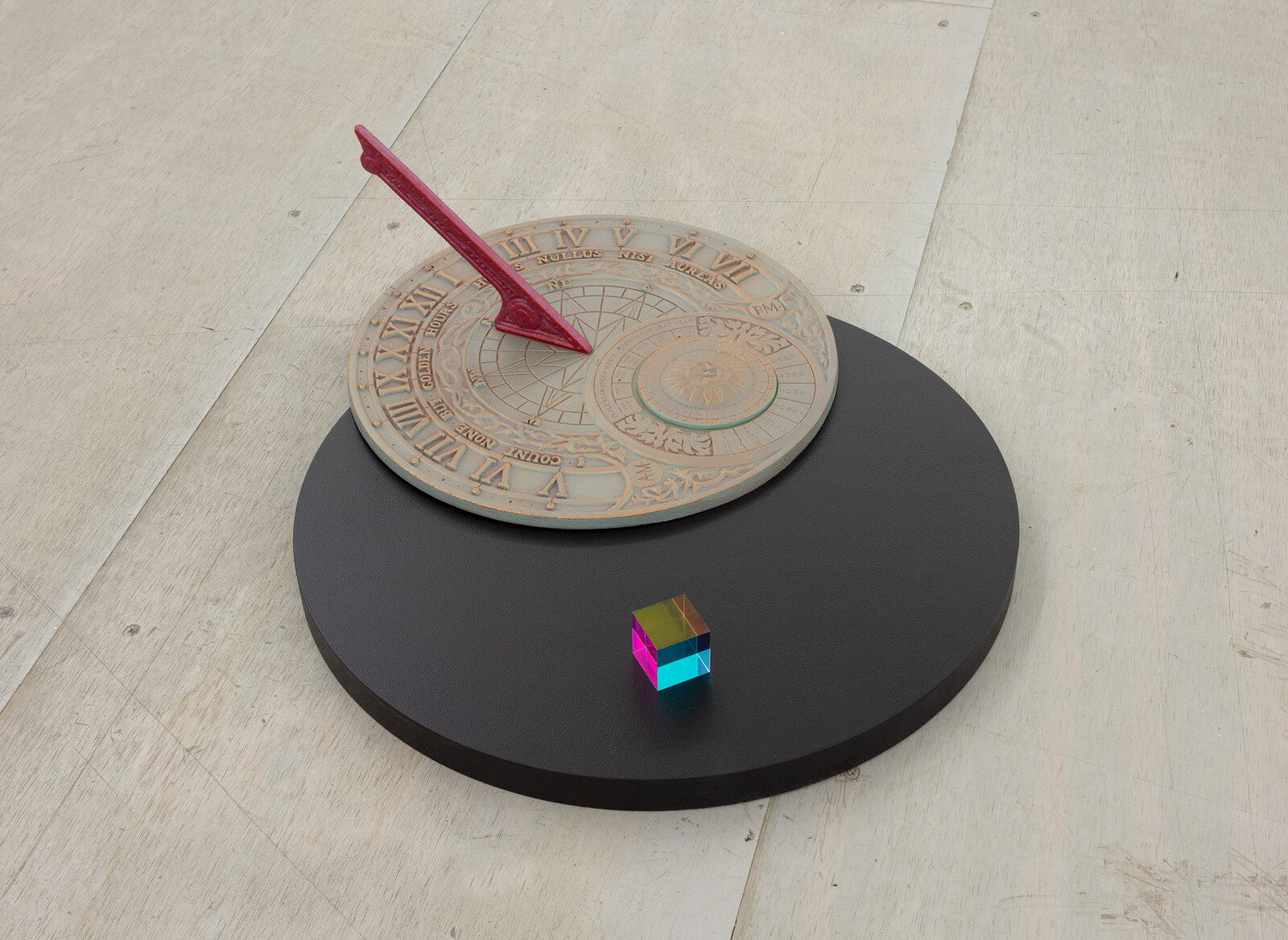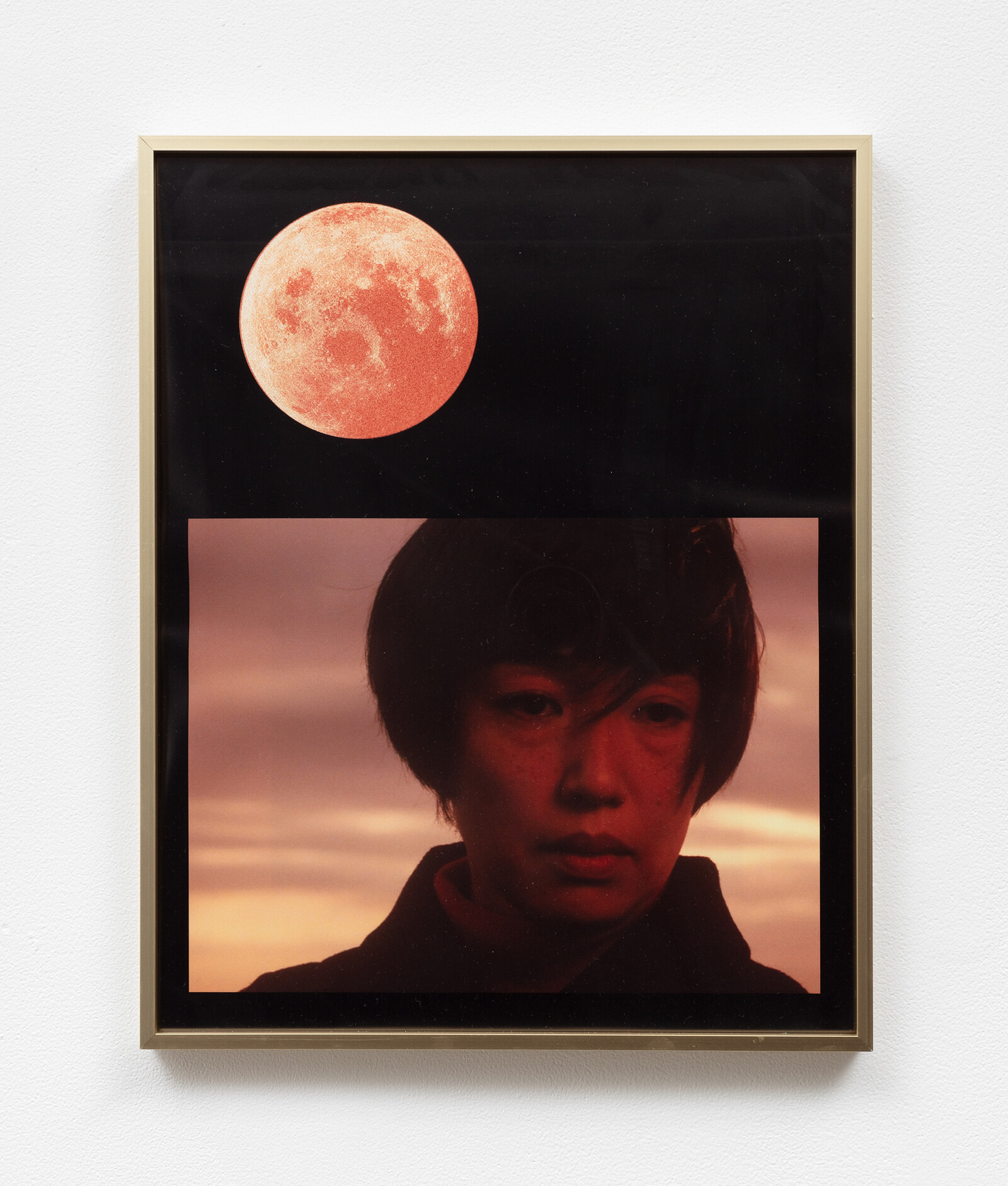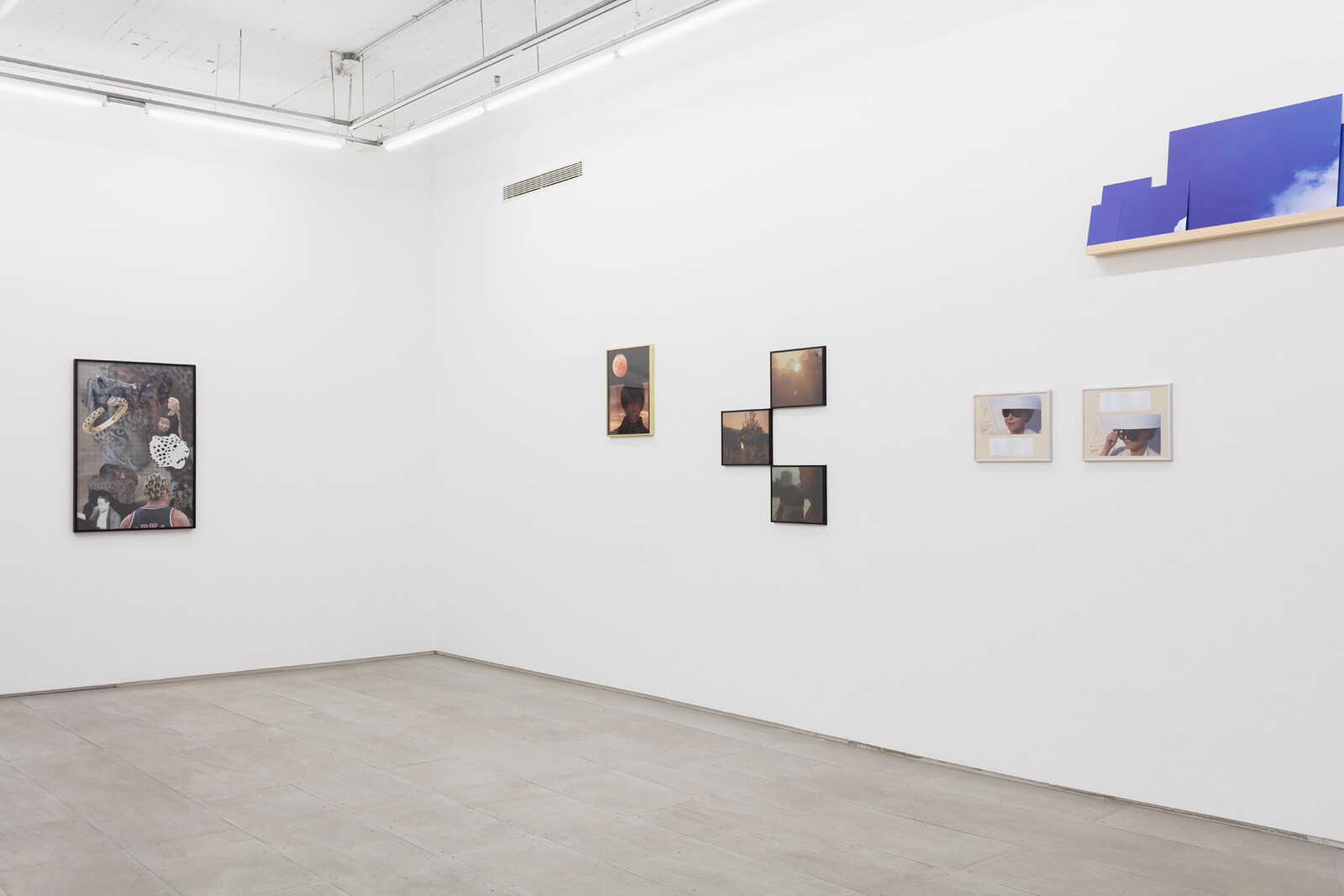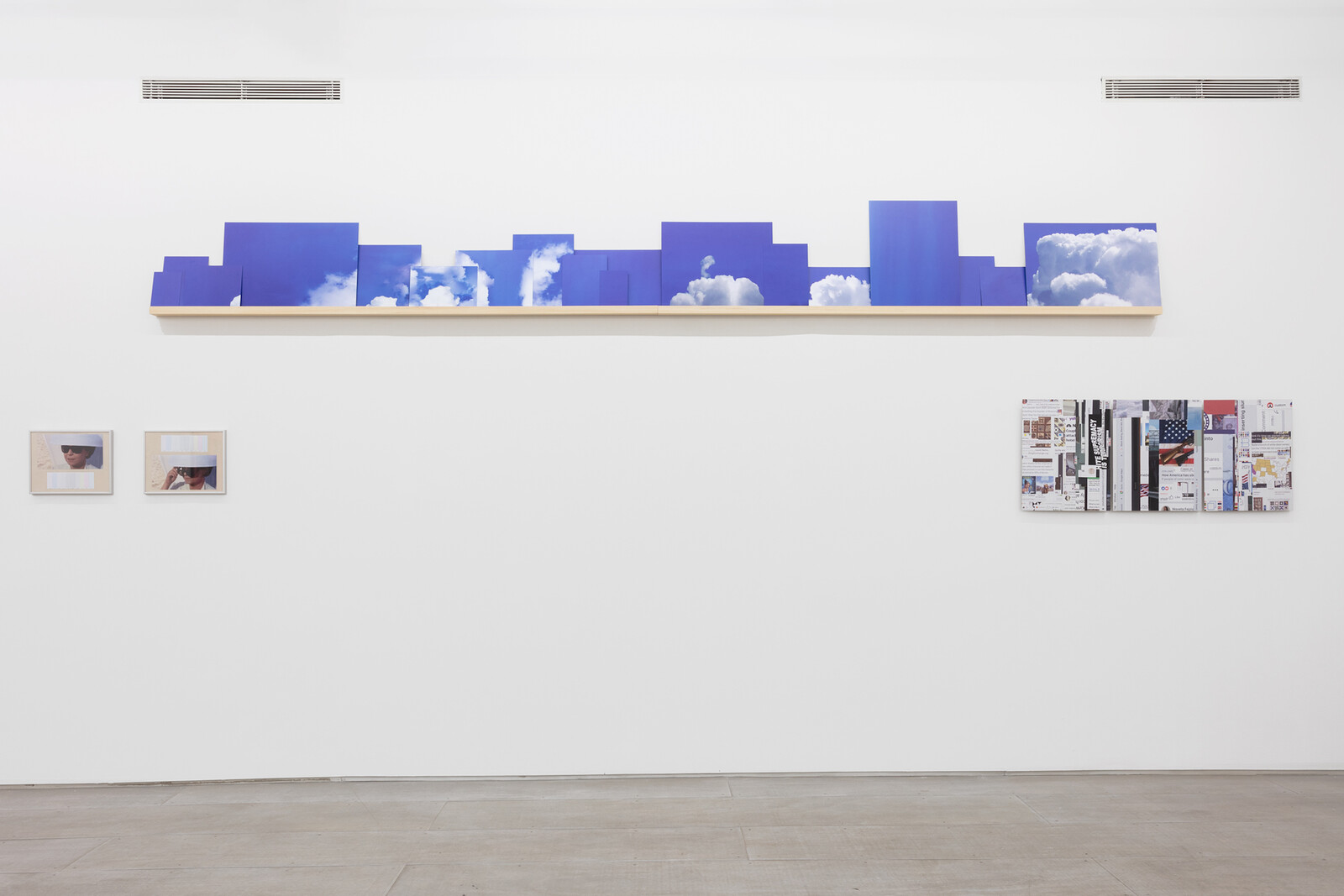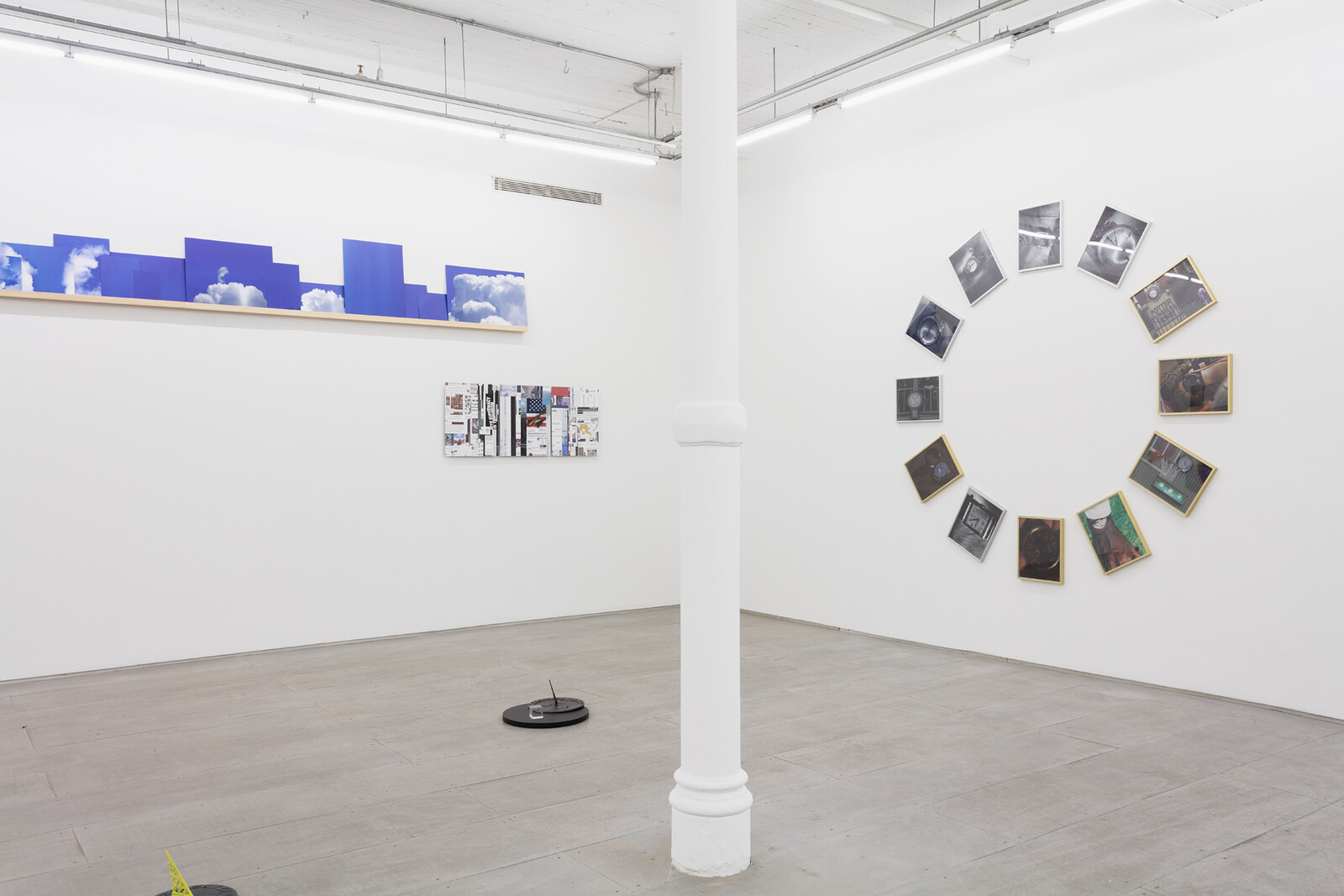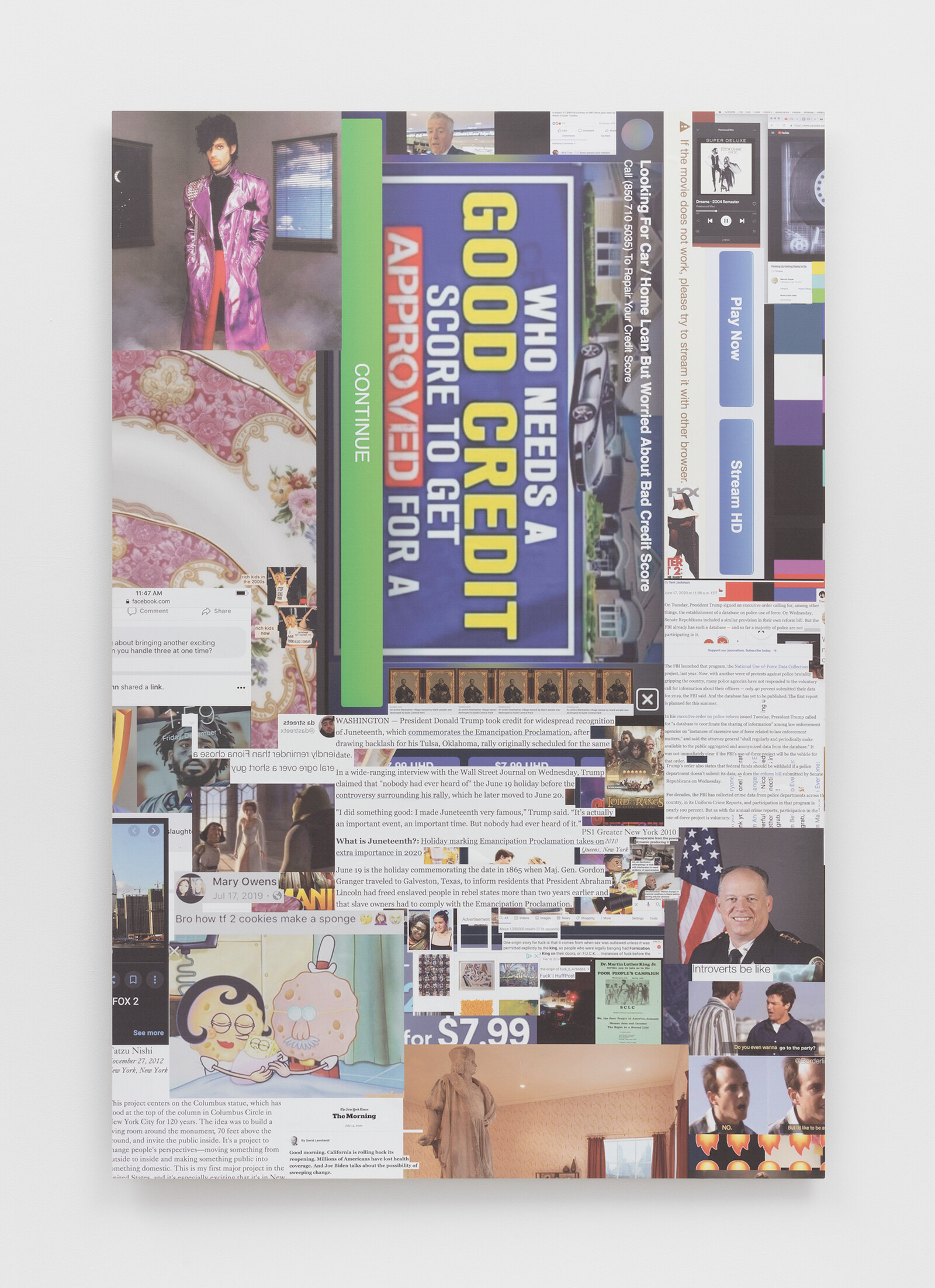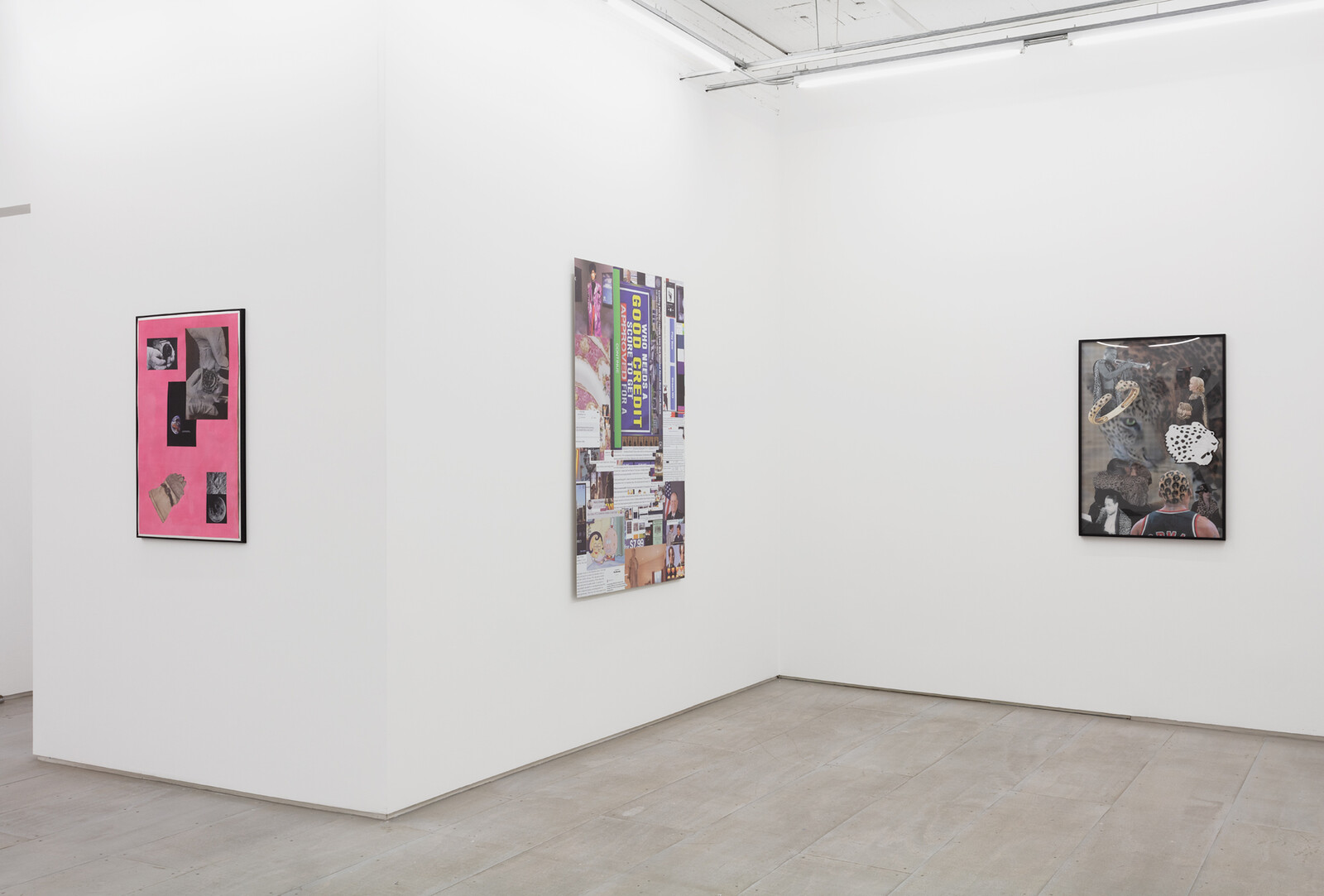The word “dreamsickle,” like the word “chaos,” conjures numerous associations. Referring to the defunct brand of ice pop, it might invoke an orange gleam, a vanilla coat, the state of being frozen; more broadly, a “dreamsickle” suggests a tool used to harvest imaginative content, such as montage or color. In their show at New York’s 47 Canal, Lyndon Barrois Jr. and Kahlil Robert Irving probe at the chromatic (and chronomatic) channels by which cultural memory is sutured to political violence. Using collage, repurposed film stills, and frequent allusion to the coded lexicons with which we read color—for example, the artists specify that the exhibition title is formatted using the “pure Orange” code HEX #ff7c00—Barrois Jr. and Irving’s latest collaborative exhibition teases out the elastic, yet always discontinuous, circuits by which a person may inhabit the limits within which they are materially defined.
Installed at eye-level along the gallery’s main wall is Irving’s Sky_High (Low & fractured SMAERD) (all works 2021), a thin wooden shelf on which rest several square and rectangular panels that depict blue skies and fluffy clouds, cross-sections made from a digital composite image. The panels fill out the shelf’s sill, overlapping with one another from one edge to the other—such that its silhouette appears as a city’s skyline. Known for his exquisitely crushed assemblages that reproduce the contours of soda cans or takeout boxes onto the surface of fired porcelain, the slick, geometric dicing Irving applies in Sky_High doubles down on the Cubist impulse to use planar faceting to represent multiple perspectives of a chosen subject at the same time. By re-introducing a third dimension to the work via the shelf, on which the panels rest unfixed, Irving’s mosaic incorporates the saccadic function of the eye as it tries to scan or fixate on a discrete target.
Two collages printed on vinyl by Irving, Means_Angles_Integers (The weight of media) #7 and Means_Angles_Integers (The weight of media) #8, are mounted on aluminum substrates and affixed to the wall. The layered screenshots from the collective DIY space we call the internet—glossy, beveled hyperlinks that appear on scam sites, cartoonish memes, and social media posts mourning the loss of Breonna Taylor—form a dense palimpsest of text and image. It is as if the artist were responding to Piet Mondrian’s highly proportionate, harmonious grids with a primal horror vaccui—a compulsion to exhaust delimited spaces. Irving floods these spaces with digitally mediated text, forcing your eye to build metonymic, rather than metaphoric, relations across them. Rather than allowing the grid to delimit sharp reds, yellows, and blues, these flat aggregates of shared images incompletely recollected collapse the boundaries we’ve learned to perceive contain them.
Installed on the floor of the gallery is Lyndon Barrois Jr.’s sculptural installation Immortal Objects I-IV—four cast iron sundials that seem to absorb the “weight of media” to which Irving alludes in the works mentioned above. Each timepiece is placed off-center on a flat, nondescript black plinth and juxtaposed with CMY polyhedrons. These bespoke geometric miniatures use a process called “subtractive color mixing” to emit the spectrum of cyan, magenta, and yellow filtered through white light. The color model is ubiquitous to printed materials such as magazines and books, and is one of the artist’s frequent referents.1
Barrois Jr.’s archival pigment print Twilight Dialogue is one of several wall works that incorporates imagery from Japanese director Juzo Itami’s 1987 film A Taxing Woman. A blood-red full moon appears in the upper half of the image; in the screenshot that appears below it, the same hue alters the facial color of the actor Nobuko Miyamoto. Keeling down to look at one of Barrois Jr.’s timepieces more closely, I notice that each ready-made has carved into it discrete mottos—one an old adage from the Latin, “I count none but golden hours.” A line by the poet Robert Browning on another—“Grow old along with me / The best is yet to be” from the 1868 dramatic monologue “Rabbi Ben Ezra,” put to song by John Lennon in 1984—is divided by the image of a grim reaper. Barrois Jr.’s understated arrangements temper the flickering, dimensional surface effects produced by Irving’s wall works, such that for a few moments, the chaos clears and the sticky swirl called dreaming clicks brightly back into focus.
“How many colors can you create?” reads one answer on the toy manufacturer’s FAQ page; “I’m looking for the color Dreamsickle,” I want to say back: https://cmycubes.com/pages/faq.
